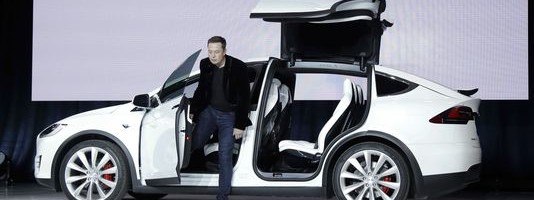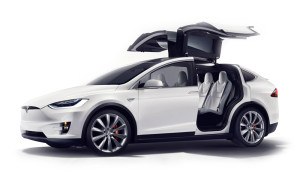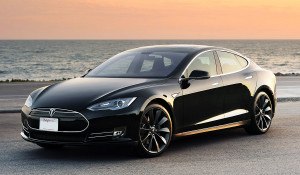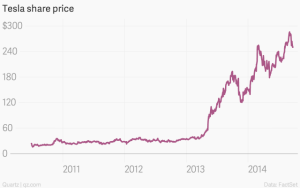Tesla Motors: A Battery Charged Model of Effectiveness

A discussion of the effective alignment of the business and operating models of Tesla Motors that have allowed the company to achieve significant success launching its industry revolutionizing electric cars
Tesla is a company with highly effective business and operating models that have jointly contributed to the spectacular success of the company since its founding by Elon Musk in 2003. Tesla’s 2012 introduction of the Model S revolutionized the auto industry by creating an electric vehicle with a 240 mile range (compared with a 93 mile range for its next competitor). When Tesla unveiled the Model X, the world’s first electric SUV, in September 2015, the company had already amassed a waiting list of 20,000 prospective buyers.
Since its 2010 initial public offering, Tesla’s stock price has performed commensurate with its success, increasing from $17 per share at its IPO to $291 per share at its all-time high and $236 today. Tesla was only able to achieve this level of success due to the strategic alignment of its business and operating models.
Business Model

Tesla’s business model is to design, develop and manufacture high-performance electric vehicles. Tesla’s core capabilities that allow it to deliver on this business model are its powertrain intellectual property and its significant in-house design & engineering team.
Tesla’s core intellectual property is contained within its electric powertrain and its ability to design a vehicle which capitalizes on the uniqueness of an electric powertrain. Tesla’s in-house design & engineering team redesigned the industry-standard chassis and heating & cooling systems as well as built low voltage electrical systems that significantly reduced the load on the vehicle battery pack, thereby maximizing the mileage range of the vehicle. Tesla specifically hired team members with competencies in computer aided design and crash test simulations, which significantly reduced the product development time of new models, and in light-weight materials, a very important characteristic to maximize mileage range in electric vehicles.
Operating Model
Tesla’s business model is supported by its operating model that transforms the firm’s assets (labor, intellectual property, capitalized assets, and final products) into valuable products through its sales and distribution network, low inventory maintenance system, and a widespread network of supercharger stations that are free for use by Tesla customers.

Tesla markets and sells its cars directly to consumers through an international network of company- owned stores and galleries. This enables Tesla to offer a premium customer experience while achieving operating efficiencies and capturing sales and service revenues that traditional auto manufacturers do not enjoy in the traditional franchised auto dealership model.
Tesla carries a limited inventory of vehicles at its stores and galleries and Tesla customers typically customize their vehicle when they place their order. Once the customer has selected the vehicle specifications and entered into a purchase agreement, Tesla requires a $2,500 payment to begin production, which is used to fund working capital and plan factory production.
Finally, to remove a barrier to the broader adoption of electric vehicles, Tesla has installed a vast network of superchargers throughout North America, Europe and Asia for the fast charging of Tesla vehicles for use by Tesla customers.
Tesla’s superior business model would not be sufficient without the complementary operating model that markets, sells and supports the vehicle once in the hand of its customers. Similarly, the operating model would be useless without the superior product developed through Tesla’s core business model of designing and manufacturing premium electric vehicles.

Specific features of the operating model that create and sustain a competitive advantage are Tesla’s network of sales and service centers and Tesla’s network of supercharger stations. Given the entrenched franchised dealership model prevalent with all of Tesla’s competitors, it would be difficult for them to replicate the company-controlled superior customer service levels and low inventory levels achieved by Tesla. Similarly, a significant capital outlay would be required for competitors to develop a supercharger network that could rival Tesla’s 380 (and growing) supercharger centers along the country’s well-traveled highways.
Tesla’s business model has also been able to leverage Tesla’s operating model for its benefit. Tesla’s preordering and prepayment system helps Tesla fund the working capital requirements of the business and better align its production with demand for maximum utilization and efficiency.
By anyone’s standards, the implications to performance of Tesla’s symbiotic business model and operating model have been phenomenal. Tesla developed and introduced an industry-defining high performance electric vehicle with long range and recharging flexibility that offers improved energy efficiency as well as reduced cost of ownership through reduced fuel and maintenance costs. Tesla’s Model S has won several awards, including the prestigious Motor Trend Car of the Year for 2013. Surveys by Consumer Reports gave Model S the highest customer satisfaction score of any car in the world in 2013 and gave Tesla Service the best overall satisfaction rating in the entire automotive industry in 2015.
Ready to purchase a Tesla for yourself? Get in line.
Sources:
Tesla Motors, Inc. 2014 10-K
Tesla Motors, Inc: Yahoo Finance Page
https://www.teslamotors.com/about
http://www.forbes.com/sites/michelinemaynard/2015/09/30/want-the-tesla-model-x-get-in-line/
http://www.businessinsider.com/tesla-had-its-all-time-trading-high-in-its-sights-but-has-slipped-back-2015-7




Really interesting post about a clear innovator!
Reading through, I would agree that Tesla built a “symbiotic business [] and operating model” but was also struck by how quickly this could unravel as better-capitalized, more-diversified auto firms enter with similar offerings (e.g., the BMW i8). For instance, if the marginal advantages erode:
– Government or private funding creates neutral third-party “supercharger” stations, reducing barriers to entry for any individual electric car manufacturer
– Legal pressure regarding captured dealer network (i.e., it violates state laws requiring channel separation) reduces ability to “own” the upfront customer experience and capture economics usually reserved for dealerships
Seems like this could be accomplished through a concentrated lobbying effort (and some $$$) from traditional manufacturers, as they look to enter the sphere. These aren’t necessarily game-changers as Tesla still has the powertrain IP; idiosyncratic talent; and advanced progress up the experience curve, but it wouldn’t help.
The question for me then becomes: how far ahead is Tesla? If BMW or Mercedes (or Ferrari, Porsche, etc.) decide to make the bet and invest significant R&D resources (and potentially hire away Tesla talent), how much reaction time does Tesla have before someone can provide a similar (or better) car at a lower price and/or with an international brand behind it?
Given a decent amount of short interest in the stock, seems like others may have a similar (albeit likely more articulate, nuanced) thesis on this point but it also strikes me that the auto industry isn’t exactly known to be nimble, so Tesla likely has more breathing room than I’m giving it credit for.
Love it! I’ve been interested in Tesla for some time now. Bill Cozean brings up a great point about the future effect of competition on Tesla’s business model. However, one particularly surprising fact is that Elon Musk is openly allowing competitors to use his company’s intellectual property with no repercussions. Competitors do not need to invest in vast amounts of R&D to get started because Tesla is giving away its learning points. Tesla is essentially betting that they will be able to maintain their market advantage in the electric vehicle category strictly through more efficient manufacturing and distribution processes as detailed above.
Sara,
Very interesting article! I do agree that Tesla has achieved outstanding success for both itself and shareholders based on this symbiotic relationship of its business and operating models.
I do feel the next journey they make into their energy business, building Gigafactory and launching Model III will prove to be the most important chapters for their story. When you are in LA I highly recommend you drive one (setting up an appointment is easy). From a COG’s point of view this all relates to their single largest expense, the battery technology. It is essential for Tesla to find a way to reduce cost faster than just following the cost curve for Li-Ion.
Will – I wanted to respond to your point about Tesla’s marginal advantages eroding if the government subsidies and neutral free supercharging station.
At first this does seem like it this could be a worry for Tesla but in fact Elon would hope that action would increase adoption of EV’s in the world. The charging standards today are fragmented but the industry is narrowing in on the SAE J1772 standard as Tesla hoped to help enforce a universal standard.
Loved this post. I think Tesla went above and beyond with the introduction of completely battery-powered cars. I think, however, that they went a little too far, too soon. Pure battery cars still have so many limitations, and while you mention their supercharger stations across the globe, Tesla are still quite a long time away from actually building out that network. For now, Teslas are confined to commuter cars. Will brings up important competitors, like the BMW i8. The i8 combines a battery powered engine with a standard gasoline combustion one. This dynamic allows the car to travel further, recharge the battery on the go, and deliver outstanding performance (let’s be real, cars are meant to be really driven). Given these points, I think Tesla went a little bit too far, and is beginning to face real headwinds from competitors that are likely reading the market better.